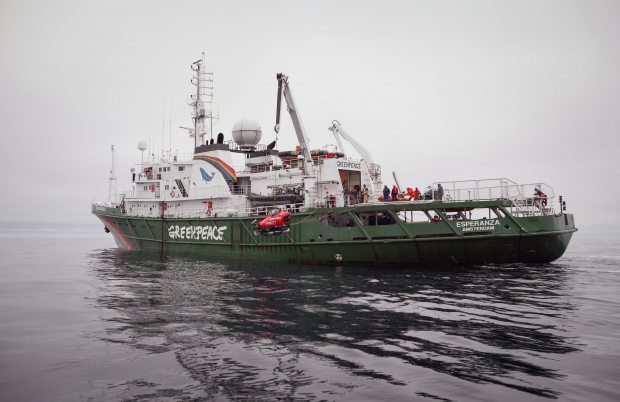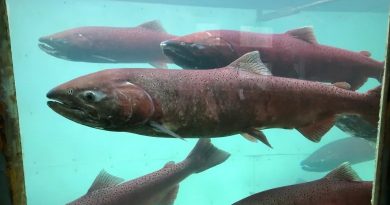Greenpeace fined $15,000 for alleged violations while in Alaska waters

(Greenpeace)
Greenpeace has been fined $15,000 by the Alaska Board of Marine Pilots for allegedly violating state law while traveling in Alaska waters near the Arctic community of Point Hope in July 2012.
The allegations were first brought to the Board of Marine Pilots’ attention in July 2012, when they received an anonymous tip regarding the Greenpeace vessel M/V Esperanza, said Crystal Dooley, marine pilot coordinator for the state of Alaska.
Under state law, a vessel registered outside of the United States larger than 65 feet must employ a state-licensed marine pilot during voyages through compulsory pilotage waters, defined as the entrances to Alaska waterways within around three nautical miles of the coastline.
Investigation findings were presented to the board during its Oct. 30 meeting. The board found that Greenpeace had entered compulsory pilotage waters around Point Hope on Alaska’s North Slope between July 22 and 27 without having a state-licensed marine pilot on board.
“Entering compulsory waters without a pilot is a criminal violation,” Board of Marine Pilots spokesperson Dru Fenster wrote in a press release on Thursday. The board’s seven voting members unanimously voted to impose the fine — $15,000 for the violation.
The Esperanza is Greenpeace’s largest vessel, at 236 feet long. Built in the mid-1980s, its heavy ice class status allows it to work in polar regions, Greenpeace writes. The vessel was ordered by the Russian government as a fire-fighting vessel and used by the Russian Navy until being sidelined in the late 1980s, and eventually ending up in Norway, where it was used to haul supplies. Greenpeace refitted the vessel and launched the ship in 2002.
The Esperanza traveled across Alaska as part of the organization’s Save the Arctic tour in the summer of 2012, protesting Arctic oil drilling. It made an effort to document “what’s at stake in the region,” photographing Arctic scenery, Greenpeace writes. The vessel traveled around the Chukchi and Bering seas, St. Paul Island, Dutch Harbor and Point Hope, among other places in Alaska.
The vessel also entered compulsory pilotage waters in Dutch Harbor and Kodiak, but during those travels the organization had hired a marine pilot, the Board of Marine Pilots found. Greenpeace has the chance to appeal the decision, Dooley said.
In a statement Friday, Greenpeace disputed the board’s claims. “The Board appears to believe a pilot should have been taken because Point Hope is near Marryat Inlet, even though the entrance to that inlet is more than 20 nautical miles away from places the Esperanza visited,” read the statement from Daniel Simons, legal counsel at Greenpeace International, the ship’s operator.
“We are disappointed the board has decided to assess a fine,” Simons wrote. Greenpeace has requested clarifying information from the Alaska Board of Marine Pilots, and will weigh options once it has received that information, said Simons.
Contact Laurel Andrews at laurel(at)alaskadispatch.com. Follow her on Twitter @Laurel_Andrews.



